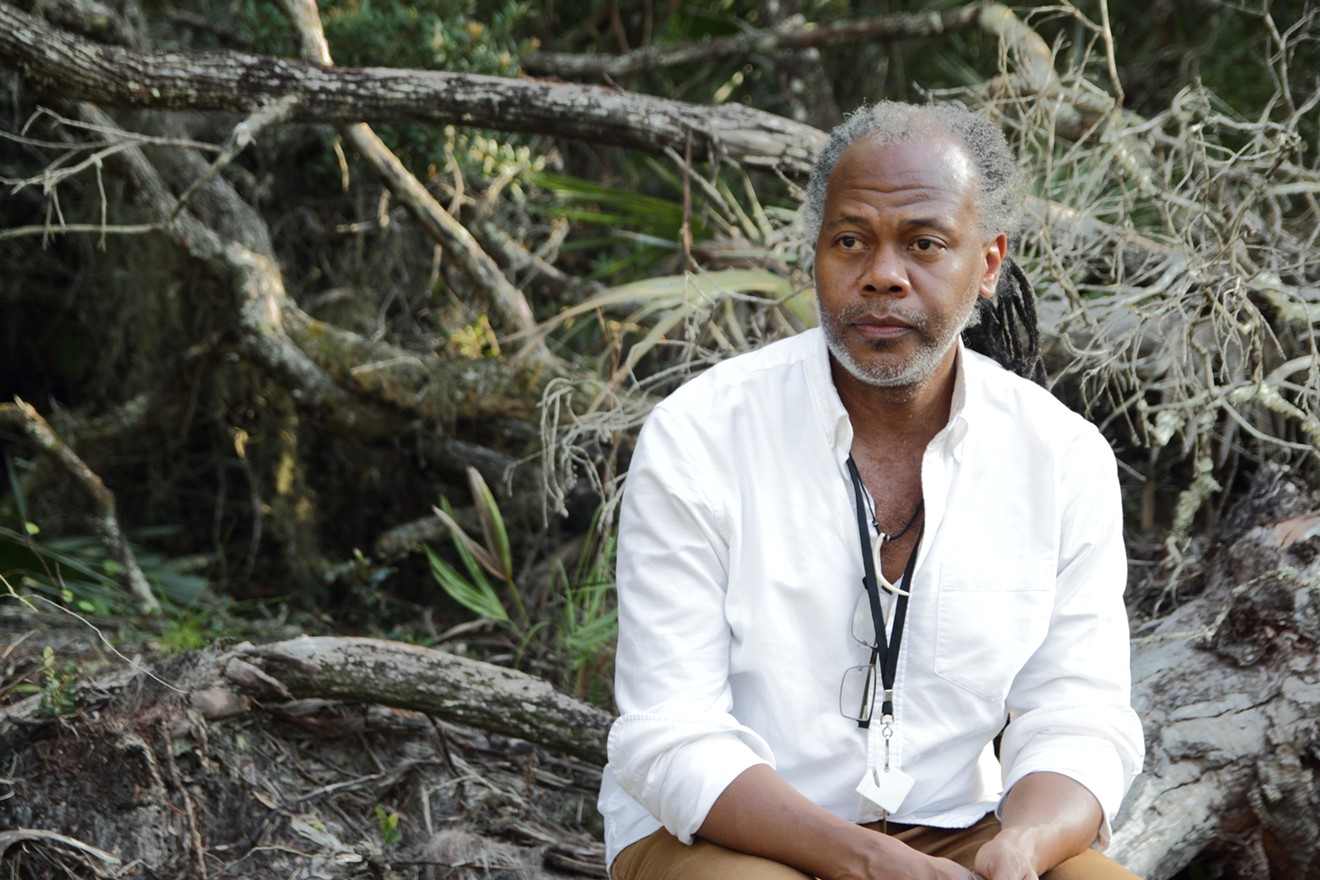New York-based choreographer Reggie Wilson’s Citizen asks loaded questions about belonging and not belonging. Tigertail presents Citizen this weekend at Miami-Dade County Auditorium, and Wilson will offer a full program, including a panel discussion and multiple dance workshops.
When he began working on Citizen, Wilson was thinking about author Zora Neale Hurston and Jean Baptiste Belley, an African-born man who came to the Americas as a slave, bought his own freedom, fought for the Haitian revolution, and ultimately died a political prisoner in France.
Centuries later, Trayvon Martin and George Zimmerman were in the news. Black Lives Matter gained steam. The finished piece premiered in 2016 and, again, the characters in the news had changed. Wilson says Citizen could be about all of this or none of it.
The idea of belonging and not belonging is an age-old human question. And Wilson freely draws from a wide range of dance traditions to tell the story. His work is remarkably difficult to label, and he offers his audience an opportunity to enter into his piece from whatever perspective they bring. The result is an experience that is at once charged and poetic.
New Times spoke with him to learn more about the ideas behind the work.
You have written that this piece was inspired in part by Zora Neale Hurston and the question of why she didn’t go to Paris like many other African-American artists of her generation.
Reggie Wilson: The piece is not a literal piece. There were a lot of beginning points and questions that started me on the road to working on the piece, and that was one of them.
There are many questions about Zora that always have intrigued me. In spite of the American system, she felt complete in herself. She felt she could make the artwork that she wanted to make here. She didn’t feel like she needed to go someplace else in order to be liberated from that. She already was kind of liberated in her own being.
I feel like probably about 30 or 40 percent of the work is what I do, which is the choreography... then another 30 or 40 percent is what the dancers do with the material — how they interpret it and how they perform it. And the remaining percent is what the audience actually does with it when they see it.
Do you think of yourself as working in a particularly African-American dance tradition?
That’s a long discussion and a debate. The material and the work that I do is definitely part of African-American culture.
I often wonder what people are meaning when they say "African-American dance." If they are talking about tap dance, if they are talking about breakdancing... if they’re talking about African dance-work traditions. But there’s also ballet. There’s a lot of jazz. There’s a lot of different modern dance techniques.
It also depends on the audience’s literacy with different kinds of dance, because it sounds like you move freely among myriad styles.
All dance is kind of equal in my eyes. And it’s equal fodder for me to take apart choreographically.
Whether it’s a dance from Zimbabwe or Senegal, or from Trinidad or from Haiti, or it might not actually be a step but a movement idea from the Mississippi Delta, or it might be from a Chicago nightclub. What are people doing when they do this dance? What aspect of that am I interested in trying to replicate, and what am I trying to do with it myself?
Is the theme of belonging and not belonging in Citizen a particularly black experience or is it a human experience for you?
It’s both. And it’s also about the performers.
Who are the performers who are performing this piece? Over the years, the bodies that are in the studio... were born and raised in different parts of the globe: China, Ghana, the Netherlands.
I started off talking about Neale Hurston and the Harlem Renaissance and African-American artists not feeling like they could be themselves here even though they felt that they were American and that they belonged here. And then that in comparison to some of the immigrant company members that I have who feel like they have gone through a whole number of things, where they come here and they want to belong, but people don’t think they belong. Another revelation for me was during the Summer Olympics last year. I was watching the opening ceremonies and the countries are marching out, and then they have this contingent of refugees — these people who didn’t have a country. That hit me. I was like, Oh, that’s what this piece is also about.
For me, this piece about belonging and not belonging is about all of those things. And if there’s anything concrete, I do believe that dance is an art form that can hold more than one meaning at the same time.
— Catherine Annie Hollingsworth, artburstmiami.com
Reggie Wilson’s Citizen
Presented by Tigertail Productions. 8:30 p.m. Friday, April 21, and Saturday, April 22, at Miami-Dade County Auditorium, 2901 W. Flagler St., Miami. Tickets cost $25 for general admission, $20 for students and seniors, and $50 for VIP. Visit tigertail.org or call 305-324-4337.
[
{
"name": "Air - MediumRectangle - Inline Content - Mobile Display Size",
"component": "19274298",
"insertPoint": "2",
"requiredCountToDisplay": "2"
},{
"name": "Editor Picks",
"component": "17482312",
"insertPoint": "4",
"requiredCountToDisplay": "1"
},{
"name": "Inline Links",
"component": "18711090",
"insertPoint": "8th",
"startingPoint": 8,
"requiredCountToDisplay": "7",
"maxInsertions": 25
},{
"name": "Air - MediumRectangle - Combo - Inline Content",
"component": "17482310",
"insertPoint": "8th",
"startingPoint": 8,
"requiredCountToDisplay": "7",
"maxInsertions": 25
},{
"name": "Inline Links",
"component": "18711090",
"insertPoint": "8th",
"startingPoint": 12,
"requiredCountToDisplay": "11",
"maxInsertions": 25
},{
"name": "Air - Leaderboard Tower - Combo - Inline Content",
"component": "17482313",
"insertPoint": "8th",
"startingPoint": 12,
"requiredCountToDisplay": "11",
"maxInsertions": 25
}
]












